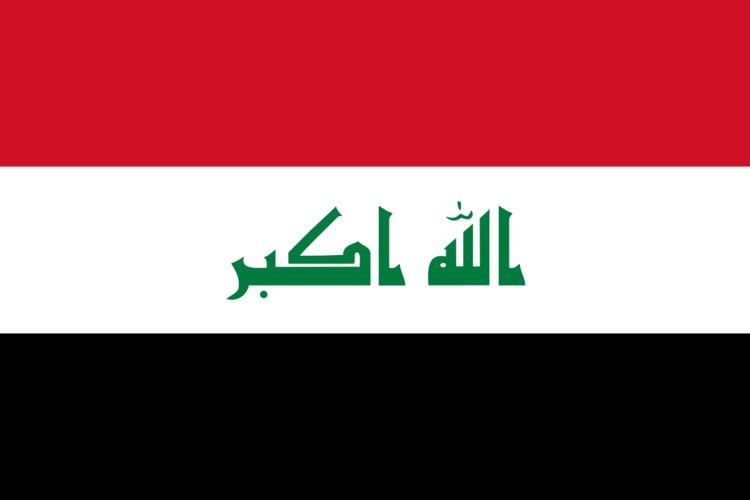 | ||
As of June 2013, the output of electricity sector in Iraq averages more than 10,000 MW, while the demand is typically more than 14,000 MW. As of January 2016, the figures are output of 13,000 MW and demand of 21,000 MW. In 2006, the average peak electricity supply was 4,280 MW falling short of demand averaged 8,180 MW by about 3,950 MW. According to U.S. agency officials, demand for electricity has been stimulated by a growing economy and a surge in consumer purchases of appliances and electronics. In addition, electricity is subsidized in Iraq, which leads to increased demand.
Contents
Infrastructure
Iraq's electricity infrastructure consists of a network of
History
Electricity entered Iraq for the first time in 1917 where the first electric machine was installed in "Khan Dala" building.
1990
Prior to the Gulf War, the total installed generating capacity was 9,295 MW with a peak demand of about 5,100 MW. Approximately 87% of the population had access to electricity. A combination of wars, sanctions, looting and vandalism has however, severely affected the entire power system infrastructure in Iraq.
1991-2003
During the 1991 Gulf War the electricity system suffered severe damage. Several transmission lines were put out of service, substations were damaged. While some of the damage of the 1991 war was repaired and about 4,500 MW of generating capacity was available in 1999 when Iraq reorganized its electricity sector. The sector was separated from the Ministry of Industry, and the Commission of Electricity (CoE) was established on June 21, 1999. About 4500 MW of generating capacity became available by the end of 2002, power supply remained insufficient and unreliable. Programmed load shedding and unplanned power outages were frequent.
Post 2003 war
Although the power system was not significantly affected by the last conflict, capacity was reduced to approximately 3,300 MW by a combination of further breakdowns, lack of spares and interruption of major maintenance cycles. The balance between generation versus demand as reported on 18/July/2004 by the PCO (Agency responsible for Coalition projects following the CPA, which completed its mandate as of 30/June/2004) is as follows:
Lack of electricity tends to affect more severely the most vulnerable groups of Iraq’s society and increases their morbidity and mortality. Ongoing efforts need to be maintained and new actions to increase electricity supply need to be initiated. In addition, significant delays have been occurring in the reconstruction work that is underway and more security related bottlenecks are expected. Baghdad, a city of 6 million (representing 1/3 of Iraq’s population) is still subjected to programmed load shedding on a rolling basis (roughly 3 hrs on 3 hrs off). This is often exacerbated by unforeseen events. For example, on 2 June and 26 July 2004, segments of Baghdad were left without power for 16 and 21 hours, respectively. These events took place in weather that is exceedingly hot. In a country with 39.7% of its population under 15 years, these events don’t go unnoticed and the need to add generating capacity to the grid is most pressing.
Prewar Baghdad had (16-24) hours per day and was favored for distribution, the remainder of Iraq received 4–8 hours per day. Post war, Baghdad no longer has priority and therefore both Baghdad and the country as a whole received on average 15.5 hours every day as of February 2010.
Generation
The 1990 installed capacity of 9,295 MW consisted of 120 power-generating units in various thermal, gas turbine and hydroelectric power stations. Approximately 70% of Iraq’s installed power generating capacity was damaged or destroyed during the 1991 Gulf War. All major power stations were damaged and nearly 80% of the gas turbines units were affected. After 1991, only about 50 units were available, with a generation capacity of 2,325 MW. The construction work on three new large thermal power stations at Yousifiya, Al-Shemal and Al-Anbar were stopped, because of the ensuing sanctions.
Thermal power stations
The majority of the power plants in Iraq were built between the mid-1970s and 1980s, with a few small gas-fired plants commissioned in 2003. The majority of the existing power plants are thermal plants that use crude oil supported by gas-fired and hydro plants.
Gas power stations
Hydro-power stations
Imports
Local diesel generators
These are either small generators for a capacity of a house or large enough to supply a block of houses within the neighborhood supplying power for monthly fees, 14.2 US cent/kWHr.
Iraq rebuilding projects
As of June, 2014 Iraq spent about USD 27 billion between 2003 and 2012 to rehabilitate the power sector after decades of war and sanctions, but widespread corruption in the country has hindered development efforts and power outages continue. In 2005 the World Bank estimated that US$12 billion would be needed for near-term restoration, and the Ministry of Electricity estimated that US$35 billion would be necessary to rebuild the system fully.
